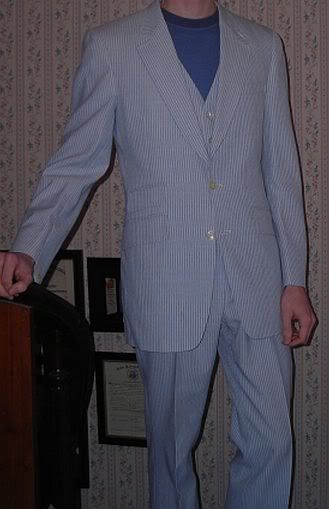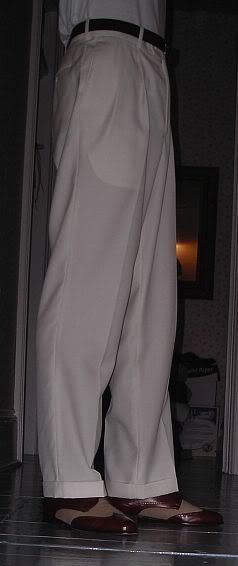While winter is the apogee of the style year (with heavy-weight fabrics like tweed, sharp looking overcoats and snappy felt fedoras to keep our heads warm), summer is another time of the year when weather extremes force us to innovate and try things unknown or, in our case, long forgotten.
Enter the summer suit.
During the Golden Era men who were dressing not only to stay cool but also look cool would go with wool, gabardine, linen, seersucker or the famous Palm Beach fabric (a secret mix of rayon, linen and mohair). While these were thicker than most standard fabrics of today they were still rather light by yesteryear's standards and actually quite breathable.
How can wool be more breathable than, say, a 100% cotton fabric of the same weight? Wool is not as tightly woven, wicking away any sweat from the skin and allowing it to evaporate, thereby letting our natural air-conditioning to work. Tightly woven cotton does not allow our sweat to evaporate as easily. It also keeps air from circulating around the body.
Another way vintage suits keep wearers cool is color. While black and dark colors absorb sunlight, white and lighter colors reflect a large majority of it. Unlike today, white was a popular summer suit color in the Golden Era, though suits were usually more of an off-white or cream color rather than pure white. The different shades of white added some depth to the suit.

It's a shame more men don't wear white suits today (or even just more suits) but the usual excuse is that white is too difficult to keep clean and too hard to get stains out of. And while it is true that white can be difficult to keep clean, it is definitely worth the effort. Nothing draws the eye like a man sharply wearing a white suit. They knew it back then, we should know it today.
Of course there is more to the summer suit than just being white.
What about seersucker?
Most people today think of a certain style of suit when they hear "seersucker", preferable one with thin blue and white stripes. However, seersucker originally described a type of fabric that 'puckers' and warps as a result of the weave. Seersucker fabric was largely available pre-1960s but then it began to disappear and is now quite expensive.
Most people today think of a certain style of suit when they hear "seersucker", preferable one with thin blue and white stripes. However, seersucker originally described a type of fabric that 'puckers' and warps as a result of the weave. Seersucker fabric was largely available pre-1960s but then it began to disappear and is now quite expensive.

And while not a seersucker, the 1970s summer suit below looks very much like one and does the trick.


And, of course, we cannot forget the ubiquitous sports coat combination. I wrote about it several months ago but I want to point out another aspect of this look. Wearing khaki trousers with a navy blue sports coat is a very nice conservative touch if you are in a more formal setting such as an interview. However, if no rules are holding you back you can be inspired by the Golden Era and replace those plain khaki trousers with ones that are white.

A double-breasted sport coat paired with white trousers, spectator shoes and a Panama hat looks quite dapper. I can't wait to try it.
No comments:
Post a Comment